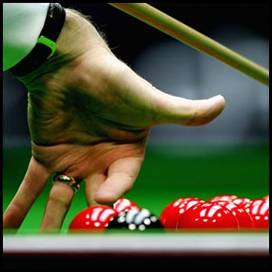Equipment dependent sports
Many sports involve the use of equipment which needs to be held. The hand is the link between the equipment and the player, and injury or disease in the hand and wrist will interfere with this crucial zone. A player must be able to concentrate solely on their sport and equipment to be able to perform to their best. The interface between player and equipment should not be the source of attention.

Tennis, badminton, snooker, cricket and golf are all examples of sports relying on equipment for their performance. Problems with the hand or wrist will affect the way in which the sport is played. Similarly, injuries to this critical zone can occur as a result of the equipment. Incorrectly sized or adjusted equipment will force the player to adapt their technique and this can result in problems (which would not be regarded as 'injuries'). The length of the equipment produces a lever arm at the junction with the hand, with the resultant, magnified, force being experienced through the hand and wrist.
A number of different problems are seen in these sports, but they rarely fall into the same categories as collision or contact sports. These problems should rarely be regarded as 'injuries' because it can be difficult to identify one specific event which caused the problem. A more chronic, even repetitive, action is usually responsible - and this has implications in seeking a solution. The approach to players in equipment dependent sports must necessarily be different in both assessment and management, from those, more brutal, contact sports.
Mr Campbell has been managing elite senior and junior tennis players for a number of years, has worked as an external consultant for the Royal and Ancient Golf Club of St Andrews, and is also a Member of the Medical Advisory Board of the European PGA Tour.
